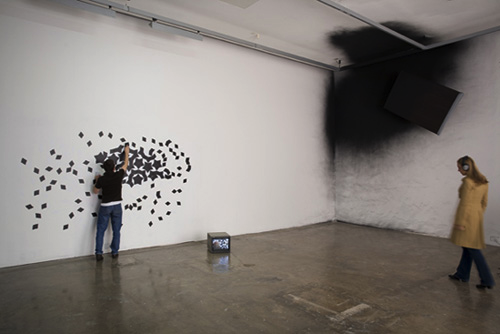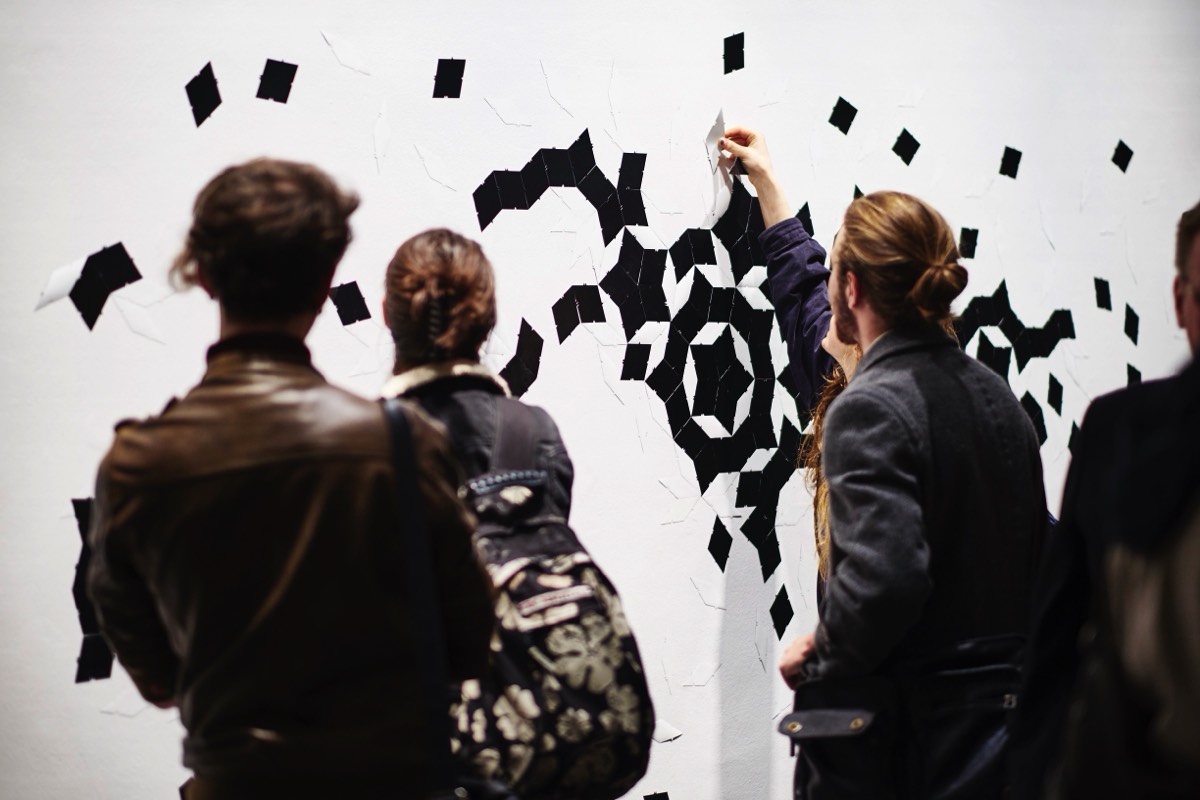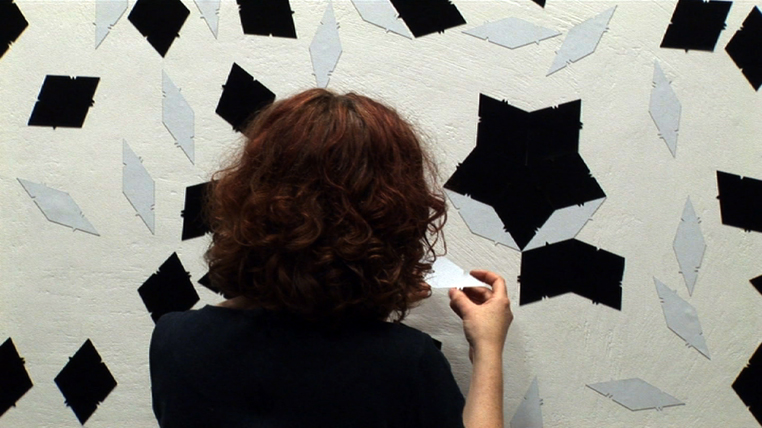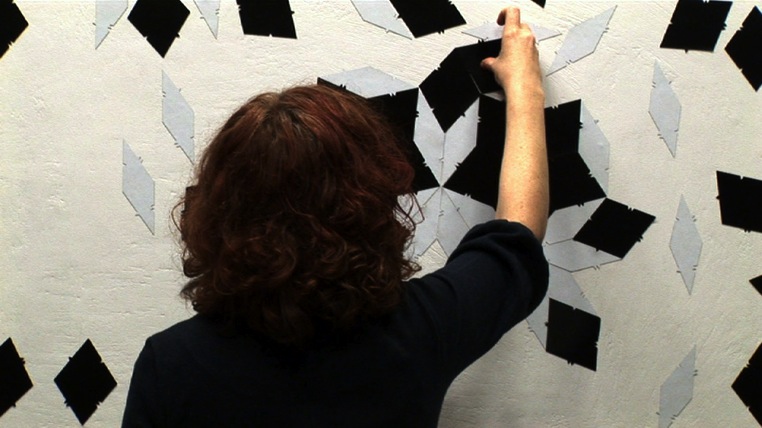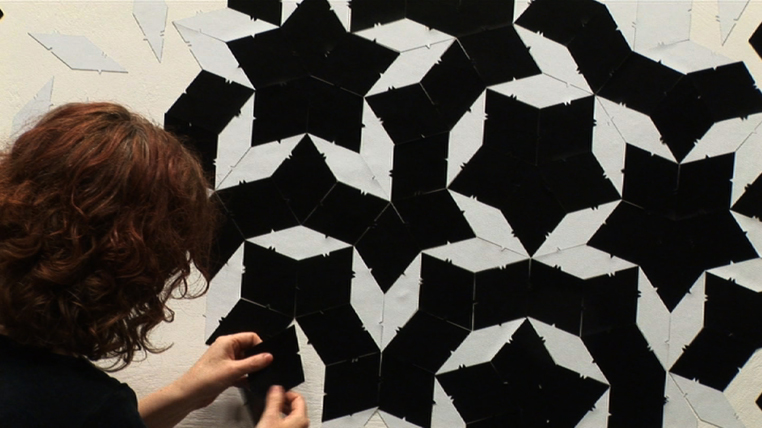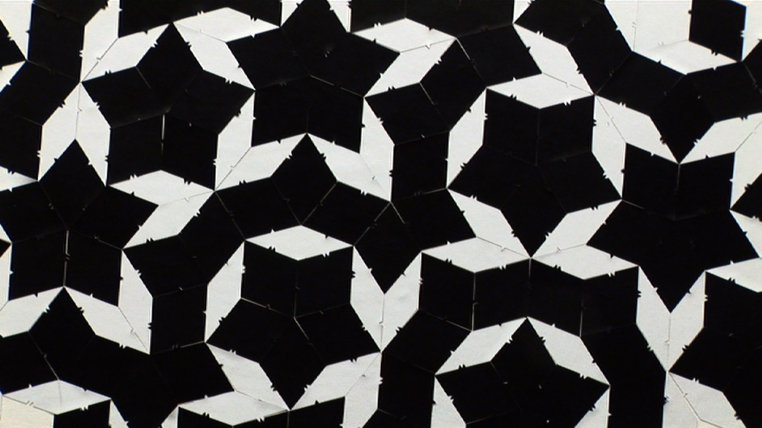
Endlessness (for Roger)
2007, installation; magnetic tiles, magnetic paint, video
Endlessness (for Roger) consists of tiles cut into two shapes that can be fitted together by viewers on a wall painted with magnetic paint. In 1974, Roger Penrose discovered two shapes that could tile a plane to infinity with a never repeating pattern. When correctly fitted together, a Penrose tiling has many remarkable properties, it is nonperiodic, a shifted copy will never match the original exactly. The installation is accompanied by a video of the artist attempting to fill in a monitors viewing plane with the two tiles.
The original Penrose tiling was proposed in a paper 'The role of aesthetics in pure and applied research'. Penrose acknowledged inspiration from the work of Johannes Kepler. In his book 'Harmonices Mundi' Kepler explored tilings built around pentagons. Earlier traces of this idea have been traced to Dürer's work.
2007, installation; magnetic tiles, magnetic paint, video
Endlessness (for Roger) consists of tiles cut into two shapes that can be fitted together by viewers on a wall painted with magnetic paint. In 1974, Roger Penrose discovered two shapes that could tile a plane to infinity with a never repeating pattern. When correctly fitted together, a Penrose tiling has many remarkable properties, it is nonperiodic, a shifted copy will never match the original exactly. The installation is accompanied by a video of the artist attempting to fill in a monitors viewing plane with the two tiles.
The original Penrose tiling was proposed in a paper 'The role of aesthetics in pure and applied research'. Penrose acknowledged inspiration from the work of Johannes Kepler. In his book 'Harmonices Mundi' Kepler explored tilings built around pentagons. Earlier traces of this idea have been traced to Dürer's work.
